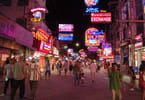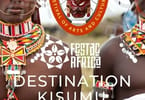NADI, Fiji – One of the last rigidly preserved vestiges of indigenous Fijian culture, Navala Village is the only place left on Fiji where everyone still lives more or less as their ancestors did – plus the occasional Coca-Cola and satellite television on special occasions.
Years ago, a village chief mandated that no new houses be built unless they were in the traditional thatched-roof bure hut style. No concrete or sheet metal allowed, only bamboo-woven walls and wooden pole supports. Today the village is a picturesque, one-of-a-kind experience treasured by locals and visitors alike.
Far enough into the highlands to deter the throngs of tourists below in Nadi, Navala Village is open to visitors but does not depend on them. For intrepid budget travelers, a visit is best achieved by a bumpy, sweaty ride on the local bus, an open-air Leyland classic that looks as if it hasn’t been updated since the 1970s. The entire journey will take at least half a day – but it will cost under $5.
My mother and I spring for a taxi. Our driver, an Indian man named Samir, offers us a special rate of $96 to make the journey there and back. We have a flight to catch the next day, so we accept.
Just a few hours into the highlands the scenery changes dramatically. The drab, square houses and billboards soon fade and the towns grow smaller until finally it’s just us, a breathtaking panorama, and the open road.
First, we pass through the majority Indian city of Lautoka, which Samir tells us is also known as “sugar city’’ for its sugar mill, the city’s biggest employer. It’s still early, but our stomachs are rumbling, and we offer to take Samir to lunch if he’ll bring us to his favorite local establishment.
“No problem,’’ he says, and pulls over on an unassuming side street. We hop out, wipe the sweat off our foreheads, and cut through an alleyway to Singh’s Fast Food, a simple Indian food court where we enjoy an assortment of chicken, lamb, and beef curries. The bill is less than $20 for the three of us.
Around the corner, we browse the vast array of sari shops and dollar stores, then get back on the road and head toward the town of Ba. There, Samir tells us we must stop at the open-air market. Visitors to Navala Village are expected to bring at least a half-kilo of the mildly narcotic kava root (locally known as “yaqona’’) for the “sevusevu,’’ the traditional welcoming ceremony.
The market is inside an old, dark warehouse behind a sprawling Western chain grocery store. Samir negotiates a deal: under $8 for an armful of what look like skinny twigs. We spend a few minutes browsing the endless rows of roots and spices, and then continue on the treacherous road to Navala.
From here, the trip can only be made in the dry season. If it rains, the bridges are too low to cross. But if your timing is right, you won’t be sorry. Once out of Ba, nature takes over – it seems we encounter more goats than people. When we do come across anyone, they seem as happy to see us as we are them. Up here, our sputtering taxi earns a friendly wave and a shout “bula,’’ or “hello,’’ as we pass.
About a mile from the village, the trademark thatched roofs of Navala come into sight. It’s the perfect place to stop for a photo. As we get nearer, Samir tells us that we must refrain from taking pictures until we pay a $12 fee to the village headman and present our kava; otherwise, we risk being asked to leave.
The moment we pull up to the village entrance, a tall, shirtless man materializes next to the cab. “Welcome, welcome!’’ He greets us in a high-pitched, singsong voice. “Bula! You have 25 [Fijian] dollars?’’
According to Samir, cutting cane sugar, the main occupation of Navala men, pays less than $8 a day. Knowing that, it’s easy to see why the villagers are all business when it comes to admission prices and gratuity-giving. Once we’ve paid our entry fee and presented our kava, however, our guide is all smiles and hospitality.
“I am Vili,’’ he says, introducing himself as the headman, and extends a hand. Samir tells us we are now free to photograph, and we set off on our tour.
The geometrically organized, strictly bure village looks as if it came straight out of National Geographic. Naked children skip around, laughing, and their shouts and giggles are the only sounds other than buzzing flies and some rustling leaves when we’re lucky enough to get a breeze.
As we amble along, Vili and Samir speak quietly in Fijian and my mother and I trail behind in wonder. The walking portion of the tour ends at Vili’s bure. Stepping into the well-designed, one-room house is a welcome relief from the heat outside. As Vili and a couple of curious villagers prepare the ritual kava drinking, I notice the decorations. The walls are adorned with a few faded photos, newspaper clippings, and brightly colored tapestries. One corner has a distinctive feminine touch, with its draped pink cloth, and plastic purses hanging from the ceiling. My full participation is soon needed for the sevusevu ceremony.
Though the effects of kava are mild, the villagers drink it religiously. Preparation is simple: After crushing the kava root with a mortar and pestle, the powder is wrapped in a muslin cloth and submerged in a large bowl of water until the mixture begins to resemble a puddle of mud. A coconut bowl is then dipped into the pot, and we are ready to try our first serving.
Vili tells us to say “bula’’ (this time it means “cheers’’) and suck it down in one gulp. I close my eyes, tilt my head back, and drink. It tastes like dirt. With a laugh, I wipe the dribbles off my chin as the villagers ceremoniously clap three times and refill the bowl for my mother.
The bowl is passed around a few times, and I begin to feel a small tingling in my mouth, but no other effects. We pass around a second bowl, and stay for nearly another hour of easygoing, sometimes hilarious conversation.
Eventually, the sun begins to hang low and Samir tells us we need to head back to Nadi. On the way, he stops at a fruit stand on the side of the road and buys us fresh coconuts.
“My treat,’’ he says, demonstrating how to cut them. The evening is sticky and hot, and the three of us sit peacefully in the back seat of the cab with the doors open as we slurp the sweet milk from the middle of the fruit.
It’s the ideal end to a unique island escape.
WHAT TO TAKE AWAY FROM THIS ARTICLE:
- Visitors to Navala Village are expected to bring at least a half-kilo of the mildly narcotic kava root (locally known as “yaqona'') for the “sevusevu,'' the traditional welcoming ceremony.
- We hop out, wipe the sweat off our foreheads, and cut through an alleyway to Singh's Fast Food, a simple Indian food court where we enjoy an assortment of chicken, lamb, and beef curries.
- For intrepid budget travelers, a visit is best achieved by a bumpy, sweaty ride on the local bus, an open-air Leyland classic that looks as if it hasn't been updated since the 1970s.






















